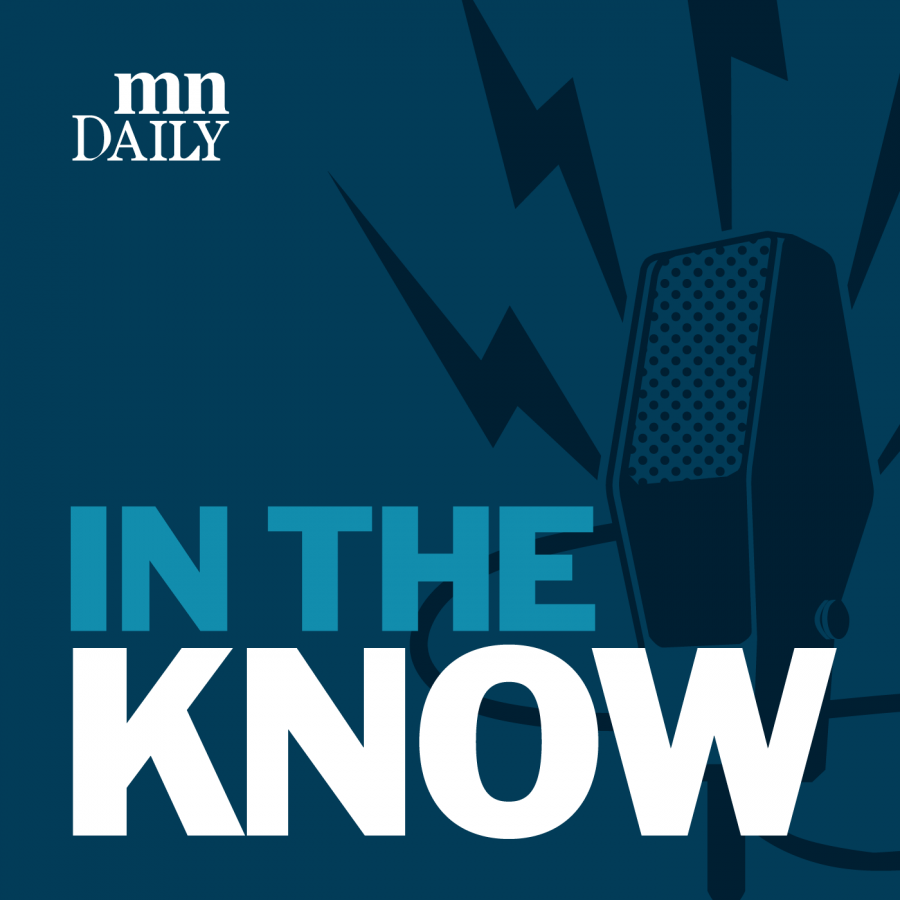ALEX LASSITER: Hello, lovely people! It’s Alex Lassiter with the Minnesota Daily, and you’re listening to In The Know, a podcast dedicated to the University of Minnesota.
Welp, it’s that time of year again, if not a month late. Those of us in close proximity to the University know that it’s time for our homecoming parade. This year, since I’m a senior, it marks my very last parade at the U. So I figured, what better way to cap it off than to take a look behind the scenes and see how it all comes together?
A lead planner for the parade, marketing major Caitlyn Nguyen, signed on for her first and last year in the role. Each year, the roster of parade planners is fully selected anew and this year, Nguyen made the cut.
CAITLYN NGUYEN: I actually really enjoy planning the parade as it’s a huge event. It’s one of, if not the longest standing tradition here at the University. So it was definitely daunting, but being able to figure out the ins and outs, and seeing how much effort and passion that goes into homecoming, especially the parade.
LASSITER: When Nguyen dove in, she had some big shoes to fill. She started later than usual, in March of this year as opposed to the usual parade planning start time of January.
NGUYEN: That’s probably like the very first thing that we do is that everybody who wants to be in the parade, whether it be student groups, departments or we do have external entries that come in.
We’re like, “Hey, parade applications are open. If you want to be a part of it, please apply.” And then it’s open from, I believe, April until end of June. And then we go through it as a team and we go through each entry, making sure that they’re showcasing pride and spirit for the U, but also following our handbook. It is such a big event, so many people go to it.
LASSITER: Not only that, but as you may have noticed if you’re a student at the U, the parade is actually happening a month later than usual, in October instead of September.
Needless to say, the logistics of planning an outdoor parade a month later than usual in Minnesota includes planning for a way colder environment.
NGUYEN: It’s been a journey trying to figure out everything because we had a lot of concerns about weather and it gets dark super quickly. So having to work with our vendors but also just the students in the office and our homecoming team about how can we make this an enjoyable year for everybody because homecoming is such a prominent week here at the University, with all the changes happening. But, like, put our own twist to it, put our own spin to it. And we had to move a lot of our events indoors, but it worked out perfectly.
LASSITER: As a lead planner, Nguyen was involved in vetting the groups that applied to be a part of the parade. One of these groups was the College of Food, Agricultural and Natural Resource Sciences Undergraduate Student Board, or CFANS USB for short.
Sophie Schneblin, the president of the student board, and Emma Kapinus, the vice president, have been hard at work preparing to represent CFANS in the upcoming parade. Part of what they want is to include as much of CFANS’ student population as possible.
SOPHIE SCHNEBLIN: So we a lot of times ask our representatives. So we have representatives from student clubs and organizations, from various different years in school from all different kinds of places.
Majors, clubs, organizations, sororities, fraternities, as many people and as much representation as we can get kind of in our little part of the parade is what we strive for.
EMMA KAPINUS: I want to say last year we had over 20 in our full group. Not sure on exact breakdowns from each category, but I would say it was over 20 in our group last year walking with us.
LASSITER: Once they’ve gathered up the people they want to represent the school, Schneblin and Kapinus told me they want to look into the crowd and see fans of CFANS.
SCHNEBLIN: One of the ways we do it is by what we pass out. We are very intentional about it. Of course, the University of Minnesota, more specifically CFANS, is home to the Honeycrisp Apple. So we were like, yes, we have to pass those out like that is us. That is such a great representation of what we are.
KAPINUS: So this year as similar to last, previous years, we will be having a tractor, which is provided to us through the farmhouse fraternity, which we are very grateful to have. And then we’ll be passing out honey sticks. We have apples.
SCHNEBLIN: I think just general swag that we have.
KAPINUS: Yeah.
SCHNEBLIN: Someone told me a story once of, like, a kid who, like, tried to give the apple back after we tried to give them an apple because they were just appalled that we were giving out fruit at a parade. Honestly, if I was a little kid at a parade I probably would have reacted the same, but I just think that’s so funny.
LASSITER: Like the house that gives out toothbrushes on Halloween.
SCHNEBLIN: Exactly.
KAPINUS: Or, I think last year, the amount of people wanting us to, like, throw the apples at them. Which, I know I appreciate that they want the apples, but I’m a little nervous. That’s, there’s a lot of people standing around. That seems like an accident waiting to happen.
LASSITER: Yeah, if you throw the apples at them, you’d probably have to throw a liability waiver at them, too.
SCHNEBLIN: Yeah, right? Sign this first, then I’ll throw it.
LASSITER: Alongside the CFANS undergrad student board and their tractor, some other unique groups will be crawling along the parade route in their own way. Like the waterski team with their boat, the nordic ski club with their roller skis and the St. Paul Bouncing Team with their, well, bouncing.
But of course, no one marches down University Avenue better than the Pride of Minnesota — the UMN Marching Band. Zainab Adebayo participated in the parade her previous three years at the University, but this will be her first homecoming in her new role as block captain, the second-in-command to the drum major.
ZAINAB ADEBAYO: To practice for our parades every time before our football games, we have something called GSR, which is Gopher Spirit Rally. And that’s essentially where you just kind of march around the stadium.
So we don’t really necessarily have to practice for the homecoming parade just because we’ve been practicing, like how to march in a parade since like our State Fair performance and every time we do GSR.
So yeah, I would say we practice by doing that and then anytime when we have our rehearsals, like, Monday through Thursday on non-game weeks. We’re just practicing like a high step or chair marching. So that kind of helps condition us a little bit.
LASSITER: And then after playing at the parade, the marching band has to rally yet again to play at the football game the very next day.
ADEBAYO: It can definitely be a little bit hard having to transition to that just because our call time for some of our 11 a.m. games are like 5 to 6 a.m. So definitely having to make sure we get a lot of sleep the night before, which can be a little hard, but.
LASSITER: Sorry, did you just say the call time for an 11 a.m. game is at 5 or 6 in the morning??
ADEBAYO: Yeah, we’ll straight up have to show up in rehearsal, in block at like 6 a.m. And, yeah, we’ll rehearse our halftime show or like pre-game drill.
LASSITER: With a full roadmap of plan to parade to postgame, homecoming seems a lot more homey. It’s a little sad because, even though it’s a month later than usual, it is still my last one. By the time homecoming weekend does roll around, I’ll be nearly halfway through my senior year of college. Things are going to start zooming by quicker and quicker. So even if something doesn’t happen when you’re used to it taking place, savor it, because at least it’s happening at all.
This episode was written by Alex Lassiter and produced by Kaylie Sirovy. As always, we appreciate you listening in and feel free to send a message to our email inbox at podcasting@mndaily.com with any questions, comments, concerns or ideas for episodes you’d like to see us produce this season. I’m Alex, and this has been In The Know. Take care, y’all.



